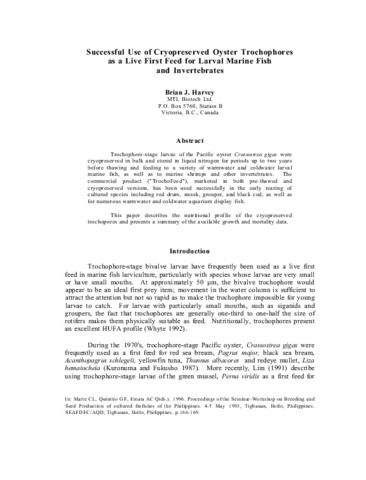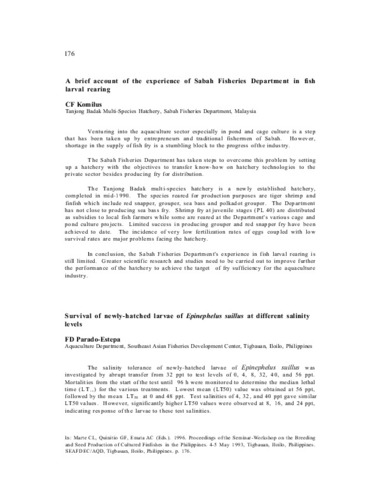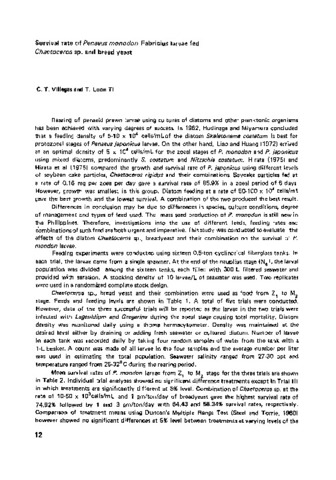Larviculture of marine species in Southeast Asia: current research and industry prospects
- Global styles
- MLA
- Vancouver
- Elsevier - Harvard
- APA
- Help
Share
Abstract
The increased requirement for food fish, the lucrative market for expensive seafood, and the need to conserve marine resources, have motivated the rapid pace of larviculture research in Southeast Asia. Various research and academic institutions in Southeast Asia such as the Southeast Asian Fisheries Development Center Aquaculture Department (SEAFDEC AQD) are carrying out research on commercially important marine species including 10 fish, 6 crustacean, and 7 mollusk species. Since fry availability is a major constraint in the development of culture systems, a major research thrust of SEAFDEC AQD is the development of commercially viable technologies for breeding and seed production of commercially important marine fish and crustaceans such as milkfish, groupers, snappers and mud crabs, in addition to the production of fry and juveniles of endangered and depleted species such as the sea horse and the tropical abalone for stock enhancement and sea ranching.
Although hatchery production of milkfish and sea bass are now commercially viable enterprises, research is being pursued to improve fry quality through feed supplementation and to lower production cost by using alternative live or artificial feeds. Larviculture techniques are being developed for technically demanding species such as groupers and snappers. The recent success in larviculture of the mud crab Scylla serrata is expected to stimulate the growth of the mud crab industry in the region. Similarly, encouraging developments in the breeding and larviculture of the sea horse and mollusks such as the tropical abalone will provide the necessary support to carry out future stock enhancement and sea ranching programs for these species.
Suggested Citation
Marte, C. L. (2003). Larviculture of marine species in Southeast Asia: current research and industry prospects. Aquaculture , 227(1–4), 293-304. https://doi.org/10.1016/S0044-8486(03)00510-6
Type
ArticleISSN
0044-8486Collections
- Journal Articles [1258]
Related items
Showing items related by title, author, creator and subject.
-
Successful use of cryopreserved oyster trocophores as a live first feed larval marine fish and invertebrates
Harvey, Brian J. (Aquaculture Department, Southeast Asian Fisheries Development Center, 1996)Trochophore-stage larvae of the Pacific oyster Crassostrea gigas were cryopreserved in bulk and stored in liquid nitrogen for periods up to two years before thawing and feeding to a variety of warmwater and coldwater larval ... -
A brief account of the experience of Sabah Fisheries Department in fish larval rearing
Komilus, C. F.; Parado-Estepa, F. D. (Aquaculture Department, Southeast Asian Fisheries Development Center, 1996)Venturing into the aquaculture sector especially in pond and cage culture is a step that has been taken up by entrepreneurs and traditional fishermen of Sabah. However, shortage in the supply of fish fry is a stumbling ... -
Survival rate of Penaeus monodon Fabricius larvae fed Chaetoceros sp. and bread yeast
Villegas, Cesar T.; Loon Ti, T. (Aquaculture Department, Southeast Asian Fisheries Development Center, 1978)An evaluation was made of the effects of Chaetoceros species, bread yeast and their combination on the survival of Penaeus monodon larvae. In general it was found that feeding with a combination of the 2 resulted in higher ...





